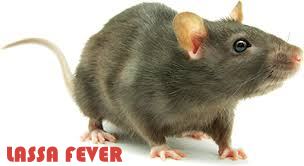A Deadly Outbreak Hits Nigeria Again!
another outbreak again and this time, it is Lassa fever. This outbreak was identified at the Federal Teaching Hospital Abakiliki – Ebonyi State, South
East Nigeria. The first reported casualty
was a man who was brought in through the Accident and Emergency department of the hospital.
As at the time of writing this report, five persons have been reported dead; the patient who was brought to the hospital, two Doctors, a Nurse and a Medical Social Worker, while two more doctors are down with high index of suspicion and have been sent to Irrua Specialist Teaching Hospital, Irrua Edo State for confirmation and management. Two other Nurses are under quarantine.
Worthy of note is that Federal Teaching Hospital Abakiliki, Ebonyi State has two sites known as FETHA 1 and FETHA 2. The outbreak so far was recorded in FETHA 2. The Doctors in the entire Federal Teaching Hospital Abakiliki have decided to put down their tools for the following reasons:-
- To conduct surveillance for other secondary contacts in line with possible window period (incubation period of the virus in an infected individual).
- The Dialysis machines and the multi functional PCR machine in the hospital have not been activated because the Suppliers have not been paid as agreed. These machines are crucial in early diagnosis and management of these sporadic viral disease outbreaks in the country.
- There have been several viral disease outbreaks in the country recently, so they can no longer be sacrificing their lives in the front line while the policymakers are apparently doing nothing in other to ensure the adequate provision of materials for prevention, early diagnosis and management of these infections in all the tertiary hospitals in Nigeria.
Key facts
- Lassa fever is an acute viral hemorrhagic illness of 2-21 days duration.
- About 80% of people who become infected with Lassa virus have no symptoms.
- Lassa virus infections can only be diagnosed definitively in the laboratory
- There is currently no vaccine that protects against Lassa fever.
- Early supportive care with rehydration and symptomatic treatment improves survival.
- Prompt isolation of affected patients, good infection prevention and control practices, and rigorous contact tracing can stop outbreaks.
Symptoms
The incubation period of Lassa fever ranges from 6–21 days. The symptoms are fever, general weakness, malaise, headache, sore throat, muscle pain, chest pain, nausea, vomiting, diarrhea, and cough. In severe cases there is facial swelling, fluid in the lung cavity, bleeding from the mouth, nose, vagina and gastrointestinal tract.
Transmission
- The Lassa virus is transmitted to humans via contact with food or household items contaminated with rodent urine or faeces.
- Lassa virus may also be spread between humans through direct contact with the blood, urine, faeces, or other bodily secretions of a person infected with Lassa fever.
- Person-to-person transmission occurs in both community especially in communities with poor sanitation or crowded living conditions
- Sexual transmission of Lassa virus has been reported.
- Health workers are at risk in caring for Lassa fever patients in the absence of proper barrier, nursing and infection prevention and control practices.
Prevention and control
- Regular washing of hands with soap and water.
- Prevention of Lassa fever relies on promoting good “community hygiene” to discourage rodents from entering homes.
- Effective measures include storing grain and other foodstuffs in rodent-proof containers, disposing of garbage far from the home, maintaining clean households and keeping cats.
- Family members should always be careful to avoid contact with blood and body fluids while caring for sick persons.
- In health-care settings, staff should always apply standard infection prevention and control precautions when caring for patients, regardless of their presumed diagnosis.
- Laboratory workers are also at risk. Samples taken from humans and animals for investigation of Lassa virus infection should be handled by trained staff and processed in suitably equipped laboratories under maximum biological containment conditions.
- Health-care workers seeing a patient suspected to have Lassa fever should immediately contact local and national experts for advice and to arrange for laboratory testing.
Picture Sources: www.freepnging.com, www.aitonline.tv
Literature Source: www.who.int/mediacentre/factsheets/fs179/en/
Literature Source: www.who.int/mediacentre/factsheets/fs179/en/

